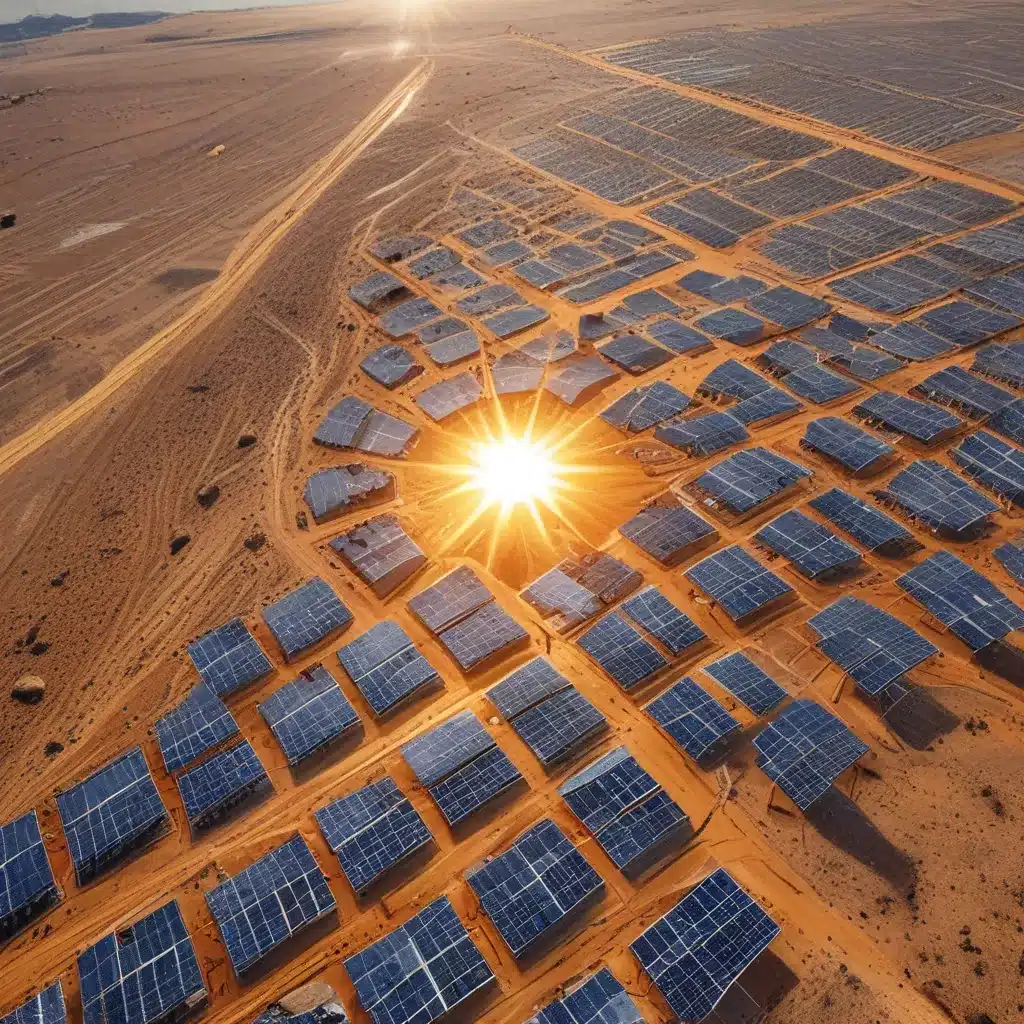
Harnessing the Sun’s Power in Unexpected Places
As I gazed out over the barren landscape, my mind raced with possibilities. This was no manicured park or sprawling agricultural expanse – this was a wasteland, a forgotten corner of the world that most would write off as useless. But to me, it represented something extraordinary: the opportunity to transform an unlikely setting into a thriving renewable energy hub.
You see, I’m on a mission to uncover the hidden potential of our planet’s most desolate spaces. It all started a few years back when I learned about the groundbreaking solar project underway at the Chernobyl nuclear disaster site. The very place that had once been the scene of unimaginable tragedy was now poised to become a symbol of hope and innovation.
Researchers had discovered that the contaminated land, while unsuitable for human habitation, could actually be an ideal location for a large-scale photovoltaic power station. The infrastructure was already in place, the land was dirt cheap, and the potential to generate clean, renewable energy for nearby communities was staggering.
It got me thinking – if we can transform the Chernobyl exclusion zone into a solar oasis, what other unexpected places might be ripe for a renewable energy revolution? That’s when I set out on a journey to uncover the hidden gems – the wastelands, the abandoned lots, the post-industrial landscapes – that could one day be home to thriving solar farms.
Unlocking the Potential of Landfills and Brownfields
My first stop on this quest was right here in my own backyard – or rather, the backyard of Solar As Systems Inc., the solar energy solutions company I work for. I had heard rumblings about a plan to transform a local landfill into a solar farm, and I knew I had to investigate further.
What I learned was truly fascinating. In New Hanover County, North Carolina, officials were in the early stages of developing a solar farm that could generate enough power for up to 2,000 homes. The site? A 723-acre landfill that was nearing the end of its lifespan.
“I just ran it by her to see if I got that ‘You lost your mind’ look, but I didn’t,” the county’s recycling and waste management director, Joe Suleyman, told a local news outlet. “She was very excited about it. And that was all I needed to start moving forward.”
It’s an ingenious concept, really. Rather than let these vast, unusable landscapes sit idle, we can harness the sun’s power to create clean, renewable energy. And the best part? The infrastructure is already in place. As Suleyman explained, the transmission equipment needed to connect the solar farm to the grid was already there, thanks to the landfill’s previous life as a waste management facility.
But New Hanover County isn’t the only one thinking outside the box. Across Spain, farmers and landowners are leasing their unused or underutilized land to solar developers, transforming everything from abandoned rice paddies to forgotten corners of their properties into thriving photovoltaic power plants.
Revitalizing Ravaged Lands
Of course, the wasteland-to-solar-farm concept isn’t limited to landfills and agricultural wastelands. Some of the most intriguing projects are taking place in areas that have been scarred by industrial activity or natural disasters.
The Chernobyl example is a prime case in point. Even three decades after the nuclear disaster, much of the surrounding land remains too radioactive for human habitation. But researchers have discovered that the site’s infrastructure and cheap land make it an ideal location for a large-scale solar farm. Plans are underway to install a four-megawatt system by the end of 2016, with the potential to eventually generate up to 1,000 megawatts – enough to power hundreds of thousands of homes in the nearby city of Kyiv.
It’s a testament to the resilience of the human spirit and our ability to find opportunity in even the most daunting of circumstances. Where others might see only devastation, I see the chance to breathe new life into these ravaged landscapes.
And it’s not just Chernobyl. In Spain, solar developers are scouring the country for any available land, including environmentally protected areas and communal properties. While this has raised some concerns about the potential impact on local farmers and ecosystems, it also highlights the sheer scale of the opportunity.
A Brighter Future, One Solar Farm at a Time
As I reflect on all that I’ve learned, I can’t help but feel a sense of excitement and optimism. We live in a world that is constantly evolving, and the way we think about energy production is no exception. Gone are the days when we were beholden to fossil fuels and limited by the constraints of traditional power generation.
Today, we have the technology and the ingenuity to harness the sun’s abundant energy in ways that were once unimaginable. And by turning our attention to the forgotten corners of the world – the wastelands, the abandoned lots, the scarred landscapes – we have the opportunity to create a brighter, more sustainable future for all.
It’s a future that I’m proud to be a part of, and one that I’m confident Solar As Systems Inc. is well-equipped to help bring to life. Whether it’s transforming a landfill into a solar oasis or revitalizing a post-industrial site, we’re committed to unlocking the hidden potential of our planet’s most unexpected spaces.
So, the next time you find yourself gazing out over a seemingly barren landscape, I challenge you to look deeper. What if that wasteland could be the site of the next groundbreaking renewable energy project? What if it could be the key to a more sustainable future for us all?
The possibilities are endless, and I can’t wait to see what we’ll uncover next.


